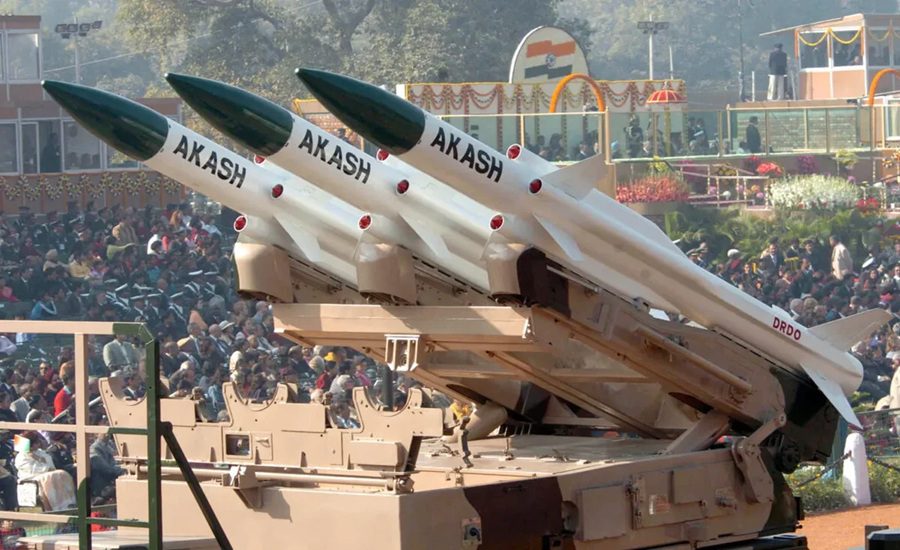Ladakh – In a major breakthrough for India’s indigenous missile development, the Defence Research and Development Organisation (DRDO) has successfully conducted a high-altitude trial of the Akash Prime surface-to-air missile system in Ladakh. The trial, held at an elevation of over 15,000 feet, showcased India’s growing capability to defend its skies under extreme conditions.
Tested Under Himalayan Extremes
The Akash Prime missile was fired under intense cold and rugged terrain, reflecting real-world battlefield conditions along India’s northern borders. Senior officials from DRDO and the Army Air Defence Command supervised the test.
The system achieved direct hits on two high-speed aerial targets, validating its precision strike capability even in the rarefied atmosphere of the Himalayas. This trial marked a significant upgrade in India’s layered air defence network, especially for regions near the Line of Actual Control (LAC) and Line of Control (LoC).
Enhanced Design for Mountain Warfare
Akash Prime is a next-generation variant of the original Akash missile. It features a more advanced seeker, designed to lock onto both enemy aircraft and drones with higher accuracy.
Its internal components and subsystems have been optimised for low-temperature operations, making it a reliable shield for mountainous deployments. This version is strategically suited for India’s forward-deployed regiments in high-altitude zones.
Following the success of this test, Akash Prime is poised for induction into the third and fourth Akash Regiments of the Indian Army. Once deployed, it will significantly reinforce India’s ground-based air defence capabilities. The system’s proven ability to operate in high-altitude regions makes it an ideal solution for protecting critical defence infrastructure and troop formations along vulnerable sectors.
Also Read: India’s Hypersonic Leap: DRDO Tests Indigenous ET-LDHCM Under Project Vishnu
Combat-Proven in Operation Sindoor
Akash Prime has already demonstrated its battlefield readiness. During the recent Operation Sindoor, the system played a key role in countering aerial threats posed by Pakistani forces.
It successfully neutralised Chinese-origin fighter aircraft and Turkish-made drones used by Pakistan. This performance under live combat conditions confirmed its operational reliability and tactical relevance.
Advancing Indigenous Defence Through UAV and C-UAS Technologies
Parallel to the Akash Prime trial, the Ministry of Defence has accelerated work on other indigenous technologies. Workshops and exhibitions on UAVs (Unmanned Aerial Vehicles) and C-UAS (Counter-Unmanned Aircraft Systems) have been actively promoted.
These systems, developed using Indian components, now offer critical real-time intelligence and precision-strike capabilities. Together with Akash Prime, they represent the backbone of India’s future-ready air defence architecture.
Reinforcing Atmanirbharta in Defence
The successful high-altitude trial of Akash Prime signals more than a technological leap—it represents India’s commitment to Atmanirbharta in defence. It highlights the growing maturity of India’s homegrown missile systems and the nation’s readiness to confront emerging threats across all terrains.
With each such success, India moves closer to achieving strategic autonomy in advanced military capabilities.
Also Read: India Clears 20,000 Cr Indigenous AWACS Project, DRDO to Lead Netra MK-2 Development



























